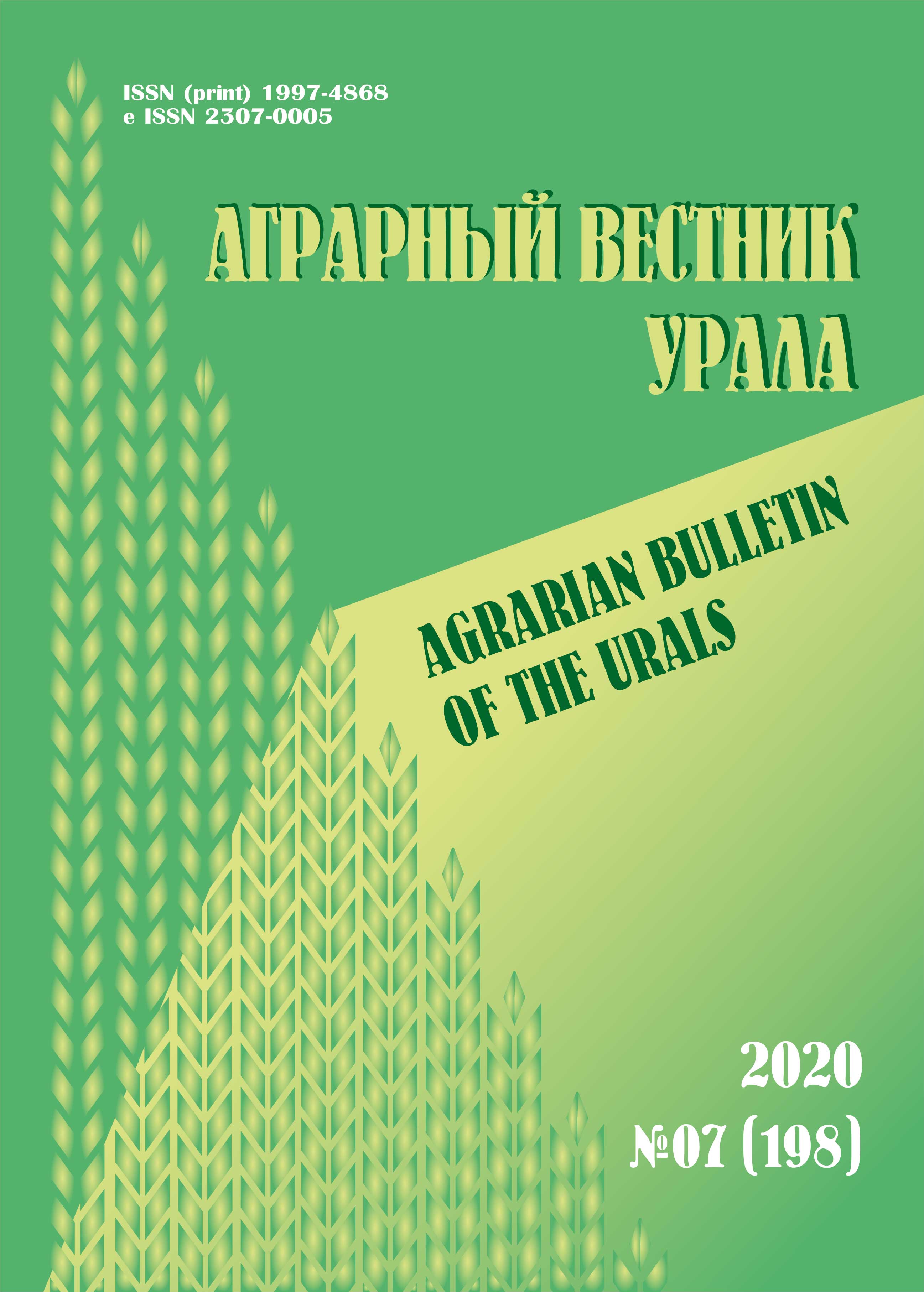Abstract. This study shows the improvement of classical methods of studying the growth and development of ornamental plants through the use of modern digital technologies. The purpose of the work is to show students in the direction of 35.03.10 “Landscape architecture” (Decorative plant growing profile) the biological features and decorative qualities of introduced plants in the conditions of the continental climate of the forest-steppe of Western Siberia and to create a digital phenological library. Methods. The construction of the phenospectrum was based on the works of T. I. Fomina and I. N. Beideman. For the design of complete phenospectrum of beautifully flowering plants, it was noted: regrowth, vegetation, budding, flowering, fruit tying, fruit ripening, the end of vegetation. In the abbreviated versions for the digital phenological library, only the periods of vegetation and decorative were noted, the flowering phase was filled with a color corresponding to the color of the variety or species. Calculations for plotting hydrothermal conditions were carried out by standard methods using statistical packages of the Microsoft Excel 2003 program. Results. Examples of single-band phenospectrum characterizing various phenorhythmotypes are given. The advantage of two-band phenospectrum compiled according to the Method of phenological observations for botanical gardens is shown when characterizing plants that create a flowering and decorative-deciduous effect. According to this Method, the phenology of vegetative aboveground shoots includes the phases: B1 – the beginning of spring regrowth; B2 – the unfolding of leaves, B3 – the end of shoot growth, L1 – the beginning of leaf death, L2 – complete leaf death. Additional phenophases are proposed for a more complete description of the spring and summer decorative-deciduous effect. Additional phenophases are proposed for a more complete description of the spring and summer decorative-deciduous effect. For example, Vant or Vlim is a period when young leaves have a bright anthocyanin or lemon color. Additionally, the period of regrowth of summer leaf generation is shown. In the course of training, on the basis of the compiled templates, the method of combining phenospectrum with diagrams of hydrothermal conditions of growing seasons, including abnormally arid and abnormally humid, is also mastered. Scientific novelty. The possibilities of a digital phenological library are shown, which allow to quickly and reliably simulate the flowering and decorative-deciduous aspects of flower expositions and landscape groups based on complete and abbreviated phenomenon spectra. The materials of the digital phenological library complement the visualization of landscaping projects.
digital phenological library, phenorhythmotype, forest steppe of Western Siberia, ornamental plant growing, landscape architecture, hydrothermal conditions, Astilbe, Phlox paniculata, Crocus, Scilla sibirica, paeonia, Solidago x hybrida, Dendranthema
1. Sokolova T. A., Bochkova I. Yu. Dekorativnoe rastenievodstvo. Cvetovodstvo. Moskva: Akademiya, 2014. 427 s.
2. Hanbabaeva O. E. Dekorativnoe sadovodstvo s osnovami landshaftnogo proektirovaniya. Moskva: VNIIGiM, 2015. 394 s.
3. Hanbabaeva O. E., Ivanova I. V., Tazina S. V. Cvetovodstvo s osnovami landshaftnogo proektirovaniya. Moskva: MESH, 2019. 150 s. EDN: https://elibrary.ru/ULQJEW
4. Vasil'eva O. Yu., Vyshegurov S. H., Ponomarenko N. V., Zueva G. A., Ksenzova T. G., Potapova S. S., Sarlaeva I. Ya., Sedel'nikova L. L., Fomina T. I. Cvetovodstvo otkrytogo grunta. Novosibirsk: Agro-Sibir', 2014. 284 s.
5. Sedel'nikova L. L. Rezul'taty issledovaniya kandyka sibirskogo v Sibirskom regione // Subtropicheskoe i dekorativnoe sadovodstvo. 2021. Vyp. 76. № 1. S. 55-66. DOI:https://doi.org/10.31360/2225-3068-2021-76-55-66. EDN: https://elibrary.ru/KPALWR
6. Zueva G. A. Introdukciya dekorativnyh zlakov i osok v Central'nom sibirskom botanicheskom sadu Sibirskogo otdeleniya Rossiyskoy akademii nauk // Vestnik Orenburgskogo gosudarstvennogo pedagogicheskogo universiteta. 2020. № 3 (35). S. 30-41. DOI:https://doi.org/10.32516/2303-9922.2020.35.3. EDN: https://elibrary.ru/UFHUZY
7. Gerasimovich L. V. Tulipa tschimganica Botschantz. v kollekcii Central'nogo sibirskogo botanicheskogo sada SO RAN // Samarskiy nauchnyy vestnik. 2019. T. 8. № 4 (29). S. 38-43. DOI:https://doi.org/10.24411/2309-4370-2019-14107. EDN: https://elibrary.ru/KOMPFV
8. Sarlaeva M. Ya., Vasil'eva O. Yu. Razvitie odnoletnih dekorativnyh rasteniy pri vesennem poseve v usloviyah kontinental'nogo klimata // Agrarnyy nauchnyy zhurnal. 2021. № 10. S. 47-52. DOI:https://doi.org/10.28983/asj.y2021i10pp47-52. EDN: https://elibrary.ru/UAFAAU
9. Fomina T. I. Perspektivnye pischevye i dekorativnye dikorastuschie vidy Allium L. v kollekcii Central'nogo sibirskogo botanicheskogo sada SO RAN // Vestnik Orenburgskogo gosudarstvennogo pedagogicheskogo universiteta. 2020. № 1 (33). S. 48-55. DOI:https://doi.org/10.32516/2303-9922.2020.33.5. EDN: https://elibrary.ru/PFIXSY
10. Beydeman I. N. Metodika izucheniya fenologii rasteniy i rastitel'nyh soobschestv. Novosibirsk: Nauka, 1974. 156 s.
11. Metodika fenologicheskih nablyudeniy v botanicheskih sadah SSSR. Moskva, 1975. 27 s.
12. Fomina T. I. Biologicheskie osobennosti dekorativnyh rasteniy prirodnoy flory v Zapadnoy Sibiri. Novosibirsk: GEO, 2012. 179 s. EDN: https://elibrary.ru/QLDBAD
13. Dymina G. D., Cheremushkina V. A. Praktikum po anatomii i morfologii vysshih rasteniy. Novosibirsk: Izd. NGPU, 2003. 130 s. EDN: https://elibrary.ru/YQMNDV
14. Savinykh N. P., Cheryomushkina V. A. Biomorphology: Current status and prospects // Contemporary Problems of Ecology. 2015. Vol. 8. No. 5. Pp. 541-549. DOI: https://doi.org/10.1134/S1995425515050121; EDN: https://elibrary.ru/VAHFMT
15. Cheremushkina V. A., Barsukova I. N. Ritm sezonnogo razvitiya i malyy zhiznennyy cikl Prunella vulgaris L. // Zhurnal Sibirskogo federal'nogo universiteta. Seriya: Biologiya. 2020. T. 13. № 1. S. 94-108. DOI: https://doi.org/10.17516/1997-1389-0295; EDN: https://elibrary.ru/ZPVAYA
16. Fomin E. S., Fomina T. I. Changes in the phenology of perennial plants in Western Siberia against the background of global warming // Contemporary Problems of Ecology. 2021. Vol. 14. No. 5. Pp. 434-445. DOI:https://doi.org/10.1134/S199542552105005X. EDN: https://elibrary.ru/GEEXLE
17. Zykova V. K., Plugatar Yu. V., Zubkova N. V., Klimenko Z. K., Plugatar S. A., Ulanovskaya I. V. Introduction of new species for extension of the period of decorative effect of flower collection // Acta Horticulturae. 2020. T. 1288. Pp. 215-218. DOI: https://doi.org/10.17660/ActaHortic.2020.1288.32; EDN: https://elibrary.ru/YCJTQK
18. Zykova V., Klimenko Z., Zubkova N. V., Alexandrova L., Ulanovskaya I., Plugatar S., Smykova N. V., Kravchenko I. The Nikita botanical gardens ornamental plants collections biodiversity extension // Acta Horticulturae. 2021. T. 1324. Pp. 137-142. DOI: https://doi.org/10.17660/ActaHortic.2021.1324.21; EDN: https://elibrary.ru/BHCOAA
19. Vorob'eva E. A., Dormidontova V. V. Analiz policentricheskoy kompozicii detskoy ploschadki «Salyut» v CPKiO im. M. Gor'kogo // Vestnik landshaftnoy arhitektury. 2020. № 21. S. 11-13. EDN: https://elibrary.ru/GHKIJD
20. Vorob'eva E. A., Dovganyuk A. I., Sayanov A. A. Princip podbora rasteniy v dozhdevom sadu v Botanicheskom sadu MGU imeni M. V. Lomonosova «Aptekarskiy ogorod» // Vestnik landshaftnoy arhitektury. 2020. № 23. S. 3-6. EDN: https://elibrary.ru/NTCJGL
21. Kryuchkova S. A., Skakova A. G. Sovremennye priemy organizacii otkrytyh obschestvennyh prostranstv v gorode Moskve // Vestnik landshaftnoy arhitektury. 2020. № 21. S. 32-36. EDN: https://elibrary.ru/HFFFRG
22. Mochalova E. Yu., Dormidontova V. V. Nekotorye principy kompozicii sovremennyh ob'ektov landshaftnoy arhitektury // Vestnik landshaftnoy arhitektury. 2020. № 21. S. 46-50. EDN: https://elibrary.ru/FTWTVS
23. Vlasova A. D., Milushkina E. A. Proekt blagoustroystva i ozeleneniya mnogofunkcional'nogo parka v rayone ZhK «Mirnyy» v g. Obninske // Vestnik landshaftnoy arhitektury. 2021. № 26. S. 16-20. EDN: https://elibrary.ru/ZOTOVW
24. Sokol'skaya O. B. Landshaftnaya arhitektura: ozelenenie i blagoustroystvo territoriy individual'noy zastroyki. Sankt-Peterburg: Lan', 2021. 328 s.









